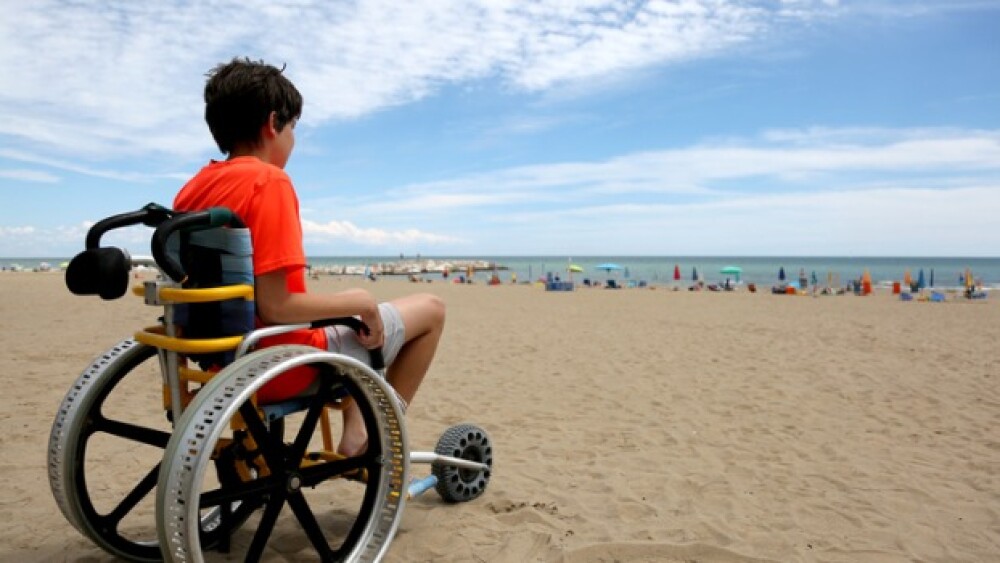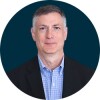An FDA advisory committee this week voted overwhelmingly against BrainStorm Cell Therapeutics’ amyotrophic lateral sclerosis treatment. However, other potential therapies offer hope for ALS patients.
Pictured: Boy in orange shirt sitting in a wheelchair at the beach/iStock, ChiccoDodiFC
Amyotrophic lateral sclerosis (ALS), known as Lou Gehrig’s disease, dominated this week’s news. An FDA advisory committee met on Wednesday to consider BrainStorm Cell Therapeutics’ much-debated experimental treatment NurOwn. The adcomm voted 17-1 that NurOwn did not demonstrate substantial evidence of effectiveness in mild to moderate ALS.
However, the near unanimous adcomm vote against BrainStorm’s candidate was not surprising. In briefing documents published Monday, ahead of Wednesday’s meeting, the FDA took issue with the cell therapy’s manufacturing plan and said BrainStorm failed to demonstrate substantial evidence of efficacy in its Biologics License Application. Further, the agency said that upon initial receipt of the BLA, it determined it was “scientifically incomplete” to demonstrate effectiveness, while the manufacturing information it received was “grossly deficient” to ensure adequate quality of the product.
Though Wednesday’s adcomm panelists expressed compassion for ALS patients, they pointed to “conflicting” information and a “lack of efficacy” in terms of survival and statistical evidence that didn’t meet the regulatory requirement. The one vote in favor of BrainStorm’s NurOwn came from Kathleen O’Sullivan-Fortin, founder of ALD Connect, who said “there’s no bigger risk than imminent certain deaths from ALS and these are unique and desperate circumstances that would require us to exercise flexibility.”
In the U.S., there are approximately 25,000 people living with ALS, a fatal neurodegenerative disease that damages nerve cells in the brain and spinal cord. While ALS has no cure and there is no effective treatment to reverse its progression, there are more than half a dozen drugs approved by the FDA to treat the neurological disorder and its symptoms. However, there is a pipeline of potential candidates on the horizon.
Clene reported this week that the company’s experimental drug reduced the risk of death by 49% compared to the largest U.S. database of previous ALS therapy trials. “Improved survival status is an important measure of drug effect,” Merit Cudkowicz, chair of the neurology department at Massachusetts General Hospital and principal investigator of the HEALEY ALS Platform Trial, said in a statement.
Also, Seelos Therapeutics’ SLS-005 (Trehalose) is being evaluated in the HEALEY ALS Platform Trial, which is examining the effectiveness of the candidate at stabilizing proteins and promoting autophagy in the brain to clear toxic protein aggregations characteristic of ALS. Top-line data from the registrational Phase II/III trial is expected before the end of 2023. It is among four late-stage Neurodegenerative Trials to Watch in Q4.
Takeda this week pledged up to $580 million in a development and commercialization deal with AcuraStem for the latter’s PIKFYVE program for ALS. The Japanese multinational pharma will gain access to AcuraStem’s PIKFYVE program, which includes AS-202, an investigational antisense oligonucleotide and the biotech’s most mature candidate. PIKFYVE is an emerging therapeutic target in ALS and Takeda now has exclusive worldwide license to AS-202 as well as to AcuraStem’s other PIKFYVE-directed assets.
Greg Slabodkin is the News Editor at BioSpace. You can reach him at greg.slabodkin@biospace.com. Follow him on LinkedIn.






